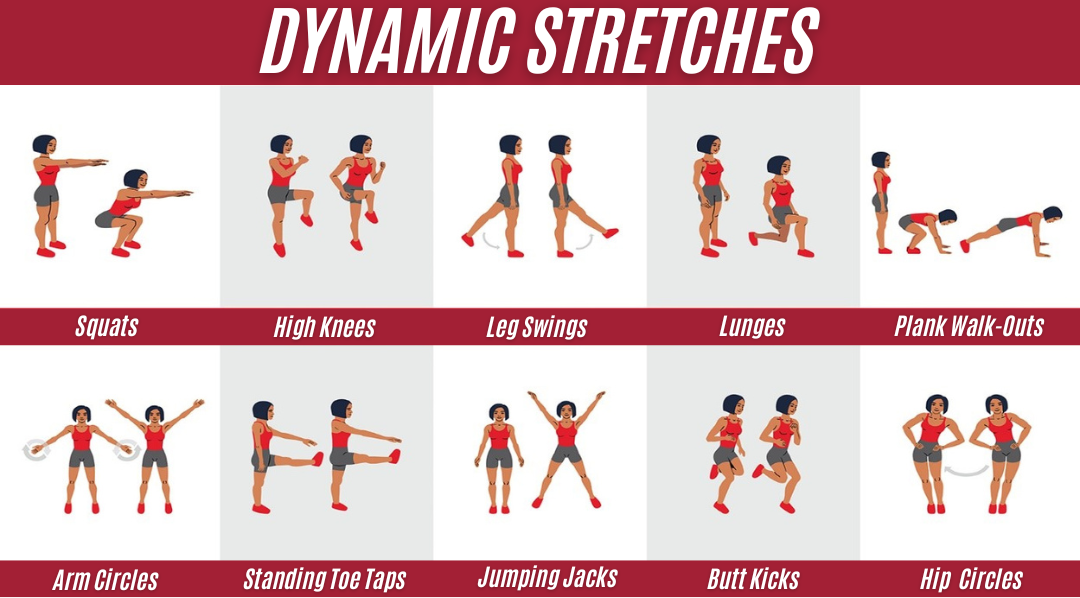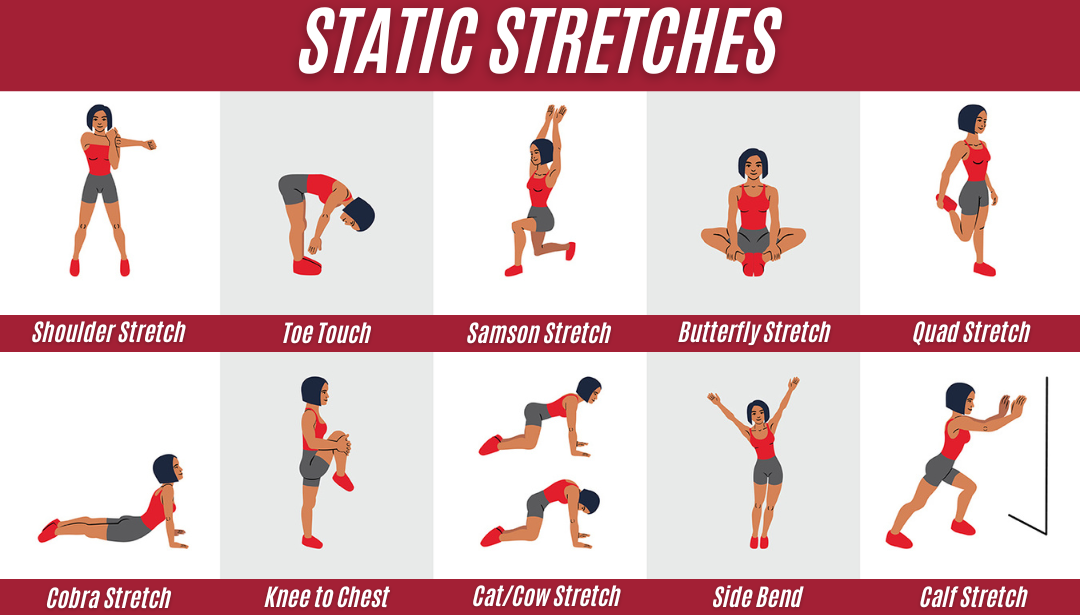Are you guilty of neglecting your stretches during your fitness routine? Don't overlook this essential aspect of exercise. Stretching plays a crucial role in keeping your muscles flexible, strong, and healthy, enabling you to maintain a full range of motion in your joints. Without proper stretching, muscles can become tight and inflexible, increasing the risk of injury and limiting your athletic potential. Today, we'll explore the two main types of stretching, each with its unique benefits, to help you optimize your fitness routine: dynamic and static stretching.
What is Dynamic Stretching?
Dynamic stretches are controlled movements that aren’t just warm-up exercises; they are powerful tools to prepare your muscles, ligaments, and other soft tissues for optimal performance and safety during your workout. Unlike static stretches, dynamic stretches involve controlled movements that take your muscles through their full range of motion.
What makes dynamic stretching so valuable is its ability to increase blood flow and heart rate, effectively raising your body's temperature and improving muscle function. By engaging various muscle groups and activating neuromuscular pathways, dynamic stretches enhance performance during activities that demand explosive or rapid movements.
Some popular dynamic stretches include walking lunges, plank walk-outs, and arm circles. These exercises prime your body for action, helping you achieve peak performance and reduce the risk of injury.

What is Static Stretching?
Static stretches are those in which you stand, sit, or lie still and hold a single position for a sustained period of time, up to about 45 seconds. Static stretching may not get your heart racing, but it is equally important for your overall fitness. Static stretches are perfect for cooling down after your workout or on rest days when your muscles are warm.
The primary benefit of static stretching lies in its ability to improve flexibility and increase joint range of motion. As you hold a stretch, your muscles relax and elongate, effectively reducing muscle tension and promoting better posture and muscular balance over time.
Embrace static stretches like the seated butterfly stretch, quad stretch, and knee-to-chest stretch. These calming movements not only prevent injury but also contribute to better overall flexibility and a sense of relaxation.

Which Is Best for Your Fitness Routine?
Essentially, the debate between dynamic and static stretching is unnecessary because both types are equally valuable when integrated correctly into your fitness routine. Dynamic stretching is ideal for warming up, as it readies your body for action, increases blood flow, and enhances performance. On the other hand, static stretching is most effective during the cool-down phase, as it aids in preventing injuries, improving flexibility, and promoting muscle relaxation.
Embrace a well-rounded approach that incorporates both dynamic and static stretches to reap the most significant benefits for your overall fitness and athletic performance. Remember, consistency is key! Make stretching a non-negotiable part of your workout regimen, and you'll enjoy improved flexibility, reduced muscle soreness, and enhanced physical prowess. If you have any specific fitness concerns or goals, seeking guidance from a personal trainer can offer personalized advice and support. Now, let's stretch our way to a healthier, happier lifestyle!
